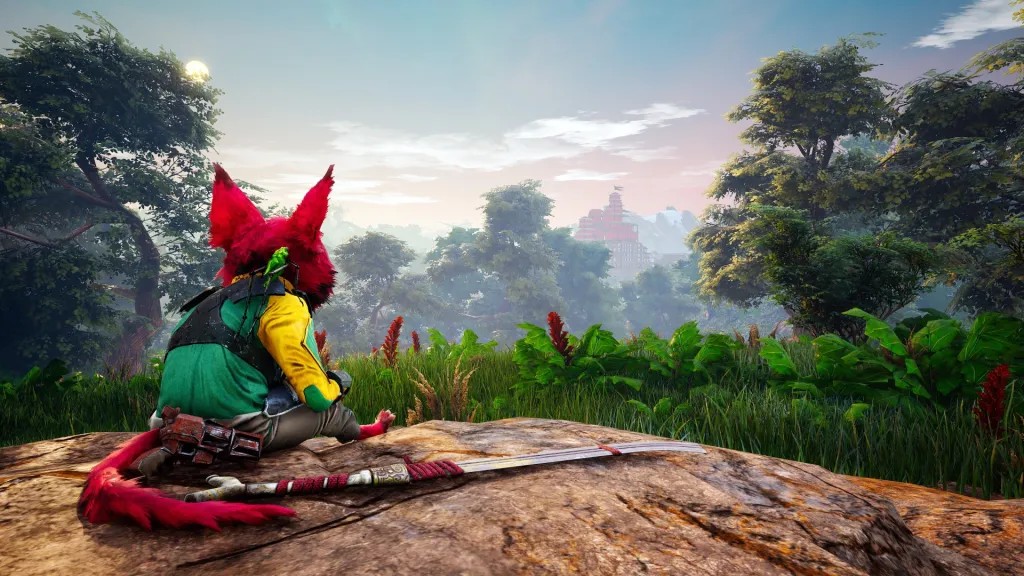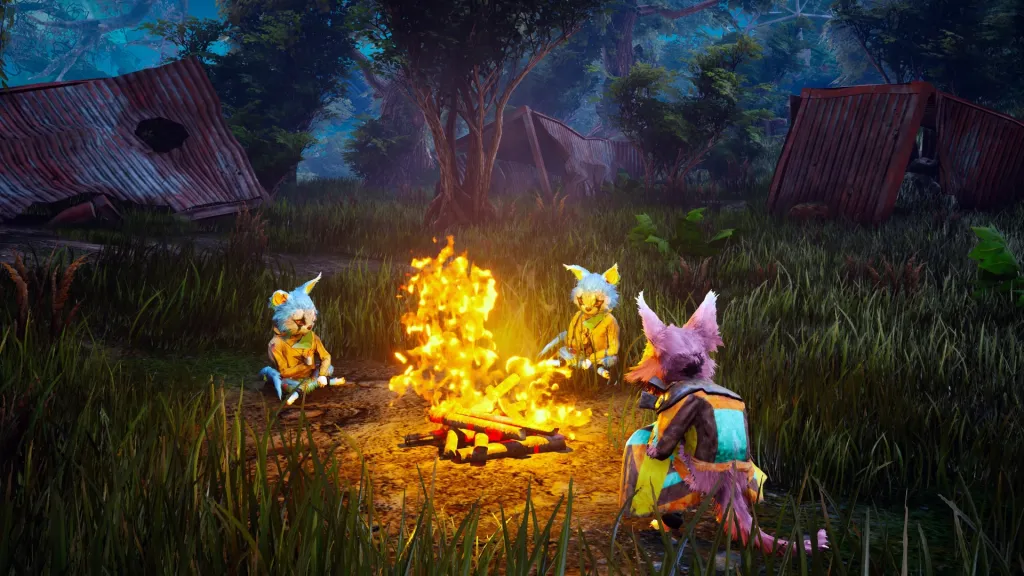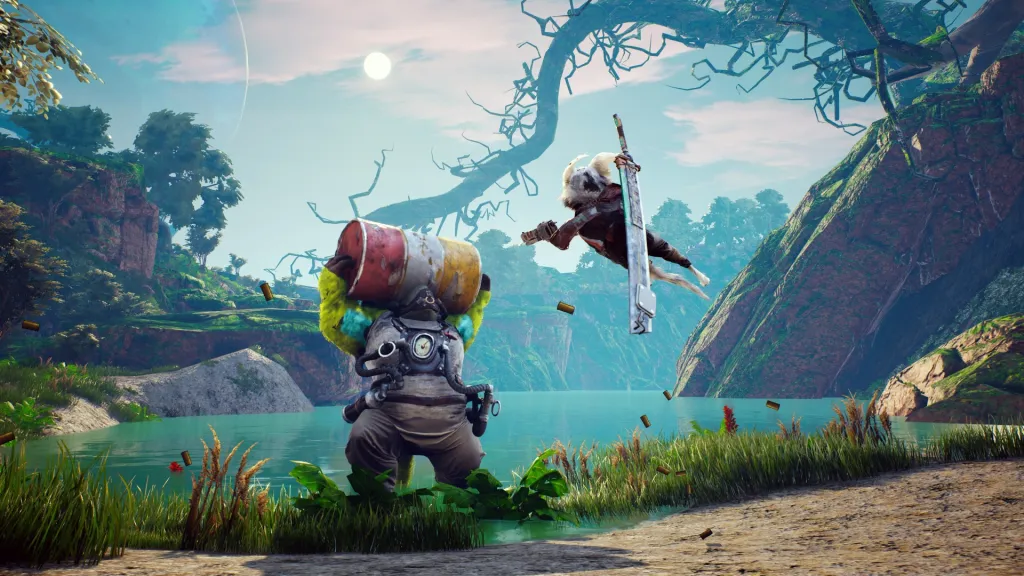For all intents and purposes, Biomutant should not work. The map is too big, there are too many characters to interact with, too many quests, and just too much that could go wrong. Even when open-world games like this are made by the biggest studios in the business—looking at you, Bethesda—they come hot off the presses with game-breaking bugs and glitches. Heck, CD Projekt Red is still trying to patch together a working version of Cyberpunk 2077.
But even in a post-Cyberpunk world, the folks at Experiment 101, which doesn’t even have its own Wikipedia page, gave the open-world genre a try anyway. While it is very rough around the edges, Biomutant works far better than it has any right to.

Biomutant sees players take on the role of a lone mercenary whose quest for revenge entangles them in a turf war between several tribes of anthropomorphic rodent-like creatures, all while deciding the fate of the world itself in a postapocalyptic land devoid of any human life. The game begins with you customizing your avatar, which in addition to attributes like height and fur color lets you customize environmental resistances. Prior to release, the character creator was described as having a direct influence on gameplay and individual statistics, with heavier creatures being slower and more powerful or those with thicker fur having increased cold resistance, but in my 50-plus hours of play I never experienced any specific gameplay changes relating to my character’s physical appearance. Things like movement speed and various environmental resistances were tied to specific attributes that could be changed and increased with character levels and armor mods. In fact, there are a few places in the game that let you change your appearance, and you will seemingly control exactly the same before and after these changes take effect.
One of Biomutant‘s biggest surprises is the sheer size of its open world and just how much there is to do in it. At no point during my with the game did I feel like I had run out of things to do. Between the two major main story line quests (similar to the Civil War and Dragon quests in Skyrim), there is also an abundance of quests that introduce you to a wide range of characters and rewards, including upgraded mounts and vehicles and improved weapons and armor. By the time I completed the main story and finished getting all the trophies, there were still a handful of quests I still hadn’t completed and NPCs I hadn’t even met. But the double-edged sword of having this much content is that a lot of the time it gets very repetitive. Each new NPC may have a unique quest, and reward, to give you but the quests are generally the same: a fetch quest, or quests, followed by something that needs to be retrieved from a bandit camp, and finally landmark discovery. The order and complexity of these quests may change, but you’re going to be doing some combination of them for every of the 20-plus NPCs who give you quests.

The other feather in Biomutant‘s cap is the overall complexity of its combat and weapons system. Each of the two types of combat, ranged and melee, has several different options to experiment with to find the right one that fits your play style. There are four different base types for both ranged and melee weapons, all with different stats that can be changed and improved upon with a healthy loot and modification system. Want a fully automatic machine gun that fires electricity? Completely doable. How about a two-handed sword that deals fire damage and has a screwdriver attached for extra damage? Also doable. Not to mention there are six unique tribe weapons associated with each chapter of the main story to find and use as well. This robust weapon system almost makes the abilities and mutations system unnecessary—while there are a lot of fun and interesting abilities to learn, among them summoning mushrooms to bounce enemies around on and straight-up Force lightning, they don’t do nearly enough damage consistently as a fully modded gun or sword, especially in the late game.
Eventually, though, all these different fighting styles and expansive open-world features had to take their toll on Biomutant, and you can tell that the game is very rough around the edges in a lot of places. I understand that no game, whether it be released by an AAA studio or not, is ever really free from bugs and glitches. But Biomutant has plenty. And while a lot of these can be described as nitpicky (questionable collision and hit detection, environments frequently sticking through solid objects), there are some that stand out. More than once I found myself stuck so badly after jumping on some rocks that it necessitated a reload, not to mention the time I was running along and completely fell through the world. Thankfully, to their credit, the Experiment 101 team has been working diligently since the game came out and has already released several patches to address these, and other widely criticized issues.

Several acquaintances responded the same way when I told them I was playing this game: “Really? Biomutant? I heard that game wasn’t very good.” I think that reputation has been unfairly attached. Sure, it doesn’t have the same notoriety, finesse, or name recognition as other games in the genre, like Ratchet and Clank, but it succeeds nonetheless like the Little Engine That Could. Obviously, some things could have been trimmed down to give the game a chance to be more polished, but if you enjoy open-world third-person action, games I think it deserves a look—especially if you can get it on sale, and especially if the devs continue to churn out patches as quickly as they have.
Biomutant was released on May 25, 2021, for Windows, PlayStation 4, and Xbox One.
*Originally posted on Twin Cities Geek on July 28th 2021*
